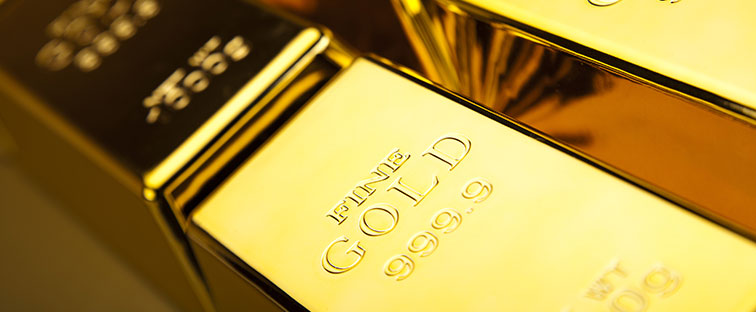What Is A Gold Ira

A Gold IRA is a type of retirement account that permits individuals to possess physical gold or other valuable metals. Unlike traditional IRAs, which consist of paper assets like stocks and bonds, a Gold IRA lets investors diversify with tangible assets. Adding gold to a retirement portfolio can hedge against inflation and protect savings from stock market fluctuations. Gold IRAs have tax advantages and potential growth. To establish a Gold IRA, investors need a reputable custodian and a trusted precious metals dealer. The assets are stored in an IRS-approved depository for safekeeping. Overall, a Gold IRA strengthens retirement plans with the valuable asset of physical gold.
Benefits of a Gold IRA
A Gold IRA, also known as a Precious Metals IRA, offers a range of benefits that make it an attractive option for investors looking to diversify their retirement portfolios. One of the main advantages of a Gold IRA is its ability to act as a hedge against inflation and deflation. While traditional retirement investments such as mutual funds and stocks are vulnerable to market fluctuations, the value of physical gold and other precious metals tends to increase during times of economic uncertainty. This means that a Gold IRA can help protect your funds when currencies falter and markets become volatile.
Another advantage of a Gold IRA is the profit potential it offers. Over the years, gold prices have consistently risen, making it one of the most reliable investments. By allocating a portion of your retirement savings to physical gold and precious metals, you have the opportunity to generate significant returns and grow your wealth.
Furthermore, a Gold IRA provides an added layer of security. Unlike paper assets that can be subject to risks such as bankruptcy or market crashes, physical gold, and precious metals are tangible assets that have been valued for centuries. By including these assets in your retirement plan, you can ensure that even if the stock market or the economy falters, you have a secure store of wealth.
A Gold IRA offers diversification, a hedge against inflation and deflation, profit potential, and the security of physical assets. By investing in gold and precious metals, you can safeguard your retirement savings and potentially increase your wealth over time.
Types of Gold IRAs
When it comes to Gold IRAs, there are a few different options to choose from, depending on your investment goals and preferences. One type is the self-directed IRA, which allows you to have more control over your investments and choose specific gold coins or bars to include in your portfolio. Another option is to invest in gold through a precious metals IRA, where you can hold a variety of precious metal products such as gold, silver, platinum, and palladium. These types of IRAs offer a diversified approach to investing in precious metals, allowing you to hedge against inflation and diversify your retirement portfolio. Additionally, there are reputable gold IRA companies and precious metals dealers that can assist you in setting up and managing your gold IRA, ensuring that your investments are held in an IRS-approved depository and providing secure storage for your physical assets. With the wide range of options available, you can find a gold IRA that best suits your individual investment needs and helps you achieve long-term financial security.

Precious Metals IRA
A Precious Metals IRA is a type of Individual Retirement Account that allows individuals to hold precious metals as a part of their retirement portfolio. It offers investors an alternative to traditional paper assets like stocks, bonds, and mutual funds, providing a hedge against inflation and potential stock market volatility.
Each metal has specific purity requirements that must be met to be eligible for inclusion in the IRA. For example, gold must have a minimum purity of 99.5%, while silver and platinum must have a minimum purity of 99.9%. Palladium must have a minimum purity of 99.95%.
These types of IRAs can be structured in different ways, including Traditional IRAs, Roth IRAs, SEP IRAs, SIMPLE IRAs, Rollover IRAs, and Inherited IRAs. Each type of IRA has its own eligibility requirements and tax implications, so it’s important to consult with a financial advisor or tax professional to determine which type of IRA is best suited for individual retirement needs.
By including precious metals in a retirement portfolio, investors can enjoy the potential benefits of owning tangible assets and the tax advantages that come with having a Precious Metals IRA. It’s crucial to work with a reputable custodian and select a trustworthy precious metals dealer to ensure the secure storage and management of the metals held in the IRA.
Self-Directed IRA
A Self-Directed IRA is a type of IRA that offers individuals a greater level of control over their investments. Unlike traditional IRAs, which usually limit investment options to stocks, bonds, and mutual funds, a Self-Directed IRA allows individuals to invest in a wider range of assets, including non-traditional options such as gold.
One of the main benefits of a Self-Directed IRA is the ability to diversify investment portfolios beyond traditional asset classes. By adding alternative investments like gold to their retirement savings, individuals can potentially mitigate risks associated with economic fluctuations and inflation. Gold has historically been seen as a hedge against inflation and a store of value during times of economic uncertainty.
By including gold in a Self-Directed IRA, individuals can take advantage of the potential price appreciation of the yellow metal while still enjoying the tax advantages offered by IRAs. Additionally, investing in physical gold through a Self-Directed IRA gives individuals the peace of mind of owning a tangible asset.
It’s important to note that self-directed IRAs have certain rules and requirements that must be followed. Consulting with a financial advisor or retirement specialist is recommended to ensure compliance with IRS regulations and to determine if a self-directed IRA is the right choice for individual retirement goals.
Hedge Funds vs. Mutual Funds
When it comes to investing in a gold IRA, individuals have several options to choose from, including hedge funds and mutual funds. While both are investment vehicles, they differ in terms of structure, strategy, and potential advantages and disadvantages.
Hedge funds are typically more exclusive and cater to high-net-worth individuals. They are known for their aggressive investment strategies and flexibility in investing across different asset classes, including gold. Hedge funds often aim to generate higher returns by taking on more risks and using complex financial instruments.
On the other hand, mutual funds are more accessible to individual investors and pool money from multiple investors to invest in a diversified portfolio. They tend to have a more conservative approach and adhere to specific investment objectives, such as capital preservation or income generation.
When it comes to a gold IRA, both hedge funds and mutual funds offer certain advantages and disadvantages. Hedge funds may provide the potential for higher returns due to their aggressive investment strategies, but they also come with higher fees and may require a higher minimum investment. Mutual funds, on the other hand, offer diversification and professional management at a lower cost, but their returns may not be as high as those of hedge funds.
Ultimately, the choice between hedge funds and mutual funds for a gold IRA will depend on an individual’s risk appetite, investment goals, and financial situation. Consulting with a financial advisor can help determine the most suitable investment vehicle for one’s specific needs.
Physical Gold vs. Paper Assets
When it comes to investing, there are two main types of assets: physical gold and paper assets. Physical gold refers to tangible forms of precious metal, such as gold bars or coins, while paper assets include investments like stocks and bonds. Understanding the key differences between these two types of assets is crucial for investors.
One of the main differences between physical gold and paper assets is their characteristics and value. Physical gold is a tangible asset that has intrinsic value due to its scarcity and desirability. It is not reliant on any third party or institution for its worth. In contrast, paper assets derive their value from contracts or agreements, such as company stocks or government bonds. The value of these assets can be influenced by factors like market sentiment, economic conditions, and company performance.
Many investors prefer physical gold as a tangible asset because it offers certain benefits compared to paper assets. Physical gold is seen as a safe-haven investment and a hedge against inflation. It has a long history of maintaining its value, even during times of economic uncertainty. Additionally, physical gold is a portable and globally recognized asset that can be easily bought, sold, and stored. It provides a level of security and stability that paper assets may not offer.
Physical gold can be acquired in various forms for investment purposes. This includes gold bars, gold coins (such as the American Eagle or Canadian Maple Leaf), and even gold bullion. These forms allow investors to choose the size and weight of their gold holdings, depending on their investment goals and preferences.
On the other hand, paper assets like stocks and bonds offer certain advantages and disadvantages compared to physical gold. Paper assets provide ease of trading and diversification options. They are also typically more liquid. However, they are subject to market volatility, economic downturns, and counterparty risk. Unlike physical gold, paper assets are dependent on external factors and can potentially lose value.
Augusta Precious Metals Ira
Augusta Precious Metals IRA is a leading provider in the field of precious metal investments. With Augusta Precious Metals, investors have the opportunity to diversify their retirement portfolios and protect their savings through the ownership of physical precious metals.
One of the standout features of Augusta Precious Metals IRA is its wide range of precious metal products. Investors can choose from gold, silver, platinum, and palladium, allowing them to customize their portfolios to suit their individual investment goals. Augusta Precious Metals also offers a lifetime service warranty, providing peace of mind to their clients.
The company has received high ratings and reviews from reputable sources, reflecting its commitment to exceptional service and client satisfaction. This ensures that investors can trust Augusta Precious Metals for their precious metal investment needs.
When investing with Augusta Precious Metals IRA, clients are allocated a personal manager who will guide them throughout the process. Whether investors choose to manage their portfolios independently or seek assistance from skilled financial advisors or precious metals specialists, Augusta Precious Metals is there to provide support and expertise.
Contributing to a Gold IRA
Contributing to a Gold IRA allows individuals to diversify their retirement portfolio and hedge against inflation. Many people wonder what is a Gold Ira Unlike traditional IRAs, which are typically limited to stocks, bonds, and mutual funds a Gold IRA allows investors to include physical gold and other precious metals as tangible assets in their retirement savings, a Gold IRA allows investors to include physical gold and other precious metals as tangible assets in their retirement savings. By investing in gold, investors can protect their savings from the volatility of the stock market and the devaluation of paper assets. Additionally, a Gold IRA offers potential tax advantages, such as the ability to defer taxes on gains until withdrawal. It is important to note that the IRS has established contribution limits for IRA accounts, including Gold IRAs. Therefore, it is advisable to consult with a reputable custodian or financial advisor to understand the rules and regulations surrounding contributions to a Gold IRA. Ultimately, contributing to a Gold IRA can provide individuals with a secure and tangible asset that has historically retained its value and acted as a store of wealth.
Contribution Limits and Tax Advantages
A gold IRA, also known as a precious metals IRA, offers individuals a unique way to diversify their retirement savings by investing in physical gold or other precious metals. One of the key benefits of a gold IRA is the tax advantages it provides.
When it comes to contribution limits, the rules are the same as those for traditional and Roth IRAs. For the tax year 2023, individuals can contribute up to $6,500 to their IRA accounts, with an additional catch-up contribution of $1,000 allowed for those aged 50 or above. However, it’s important to note that these limits apply to the total contributions made to all of an individual’s IRAs in a given year.
When it comes to SEP IRAs, the contribution limits are slightly different. Contributions to SEP IRAs are limited to 25% of an individual’s self-employment income or $66,000, whichever is lower.
The tax advantages of a gold IRA are similar to those of other IRAs. Contributions to a traditional gold IRA are typically tax-deductible, which means they can potentially reduce an individual’s taxable income in the year the contributions are made. On the other hand, Roth gold IRAs are funded with after-tax dollars, but qualified withdrawals in retirement are tax-free.
By investing in a gold IRA, individuals can hedge against inflation and diversify their retirement portfolio with physical assets. It’s important to consult with a reputable custodian or financial advisor specializing in precious metals IRAs to understand the tax implications and potential benefits fully.
Choosing a Financial Advisor/Institution
When it comes to managing a gold IRA, it is of utmost importance to choose a reputable financial advisor or institution. This is because not all self-directed IRA custodians offer gold IRA services, and it is crucial to select a custodian who is experienced and trustworthy in handling precious metals.
Working with a reputable custodian ensures that your gold IRA is properly managed and meets all the necessary regulations and requirements. They have the expertise to guide you through the process of setting up and maintaining your gold IRA, helping you navigate the complexities of adding physical gold to your retirement portfolio.
Several financial institutions are well-known for their gold IRA services. These include Oxford Gold Group, American Hartford Gold, Goldco, Lear Capital, and Patriot Gold Group. These institutions have established their reputation in the industry and have proven track records of providing excellent customer service and reliable investment options.
Storing Your Gold in an IRA
A gold IRA allows you to hold physical gold, such as gold coins or bars, as part of your retirement plan. By working with a reputable custodian, you can ensure that your gold IRA is properly managed and complies with all regulations. Not only does this provide peace of mind, but it also offers potential tax advantages and a hedge against inflation. It’s important to research and choose a trustworthy custodian that specializes in precious metals IRAs and offers secure storage facilities. Some well-known financial institutions in this space include Oxford Gold Group, American Hartford Gold, Goldco, Lear Capital, and Patriot Gold Group. These institutions have a proven track record of providing reliable investment options and excellent customer service. By utilizing their expertise, you can safely store your gold within an IRA and enhance your retirement savings strategy.
Storage Fees & Trust Companies
In a Gold IRA, one important aspect to consider is storage fees and trust companies. These factors play a crucial role in safeguarding your precious metals investments. When investing in physical gold or other precious metals for your retirement savings, it is necessary to find a reputable custodian that offers secure storage facilities.
Storage fees are a cost that you need to factor into your Gold IRA investment. These fees cover the expenses associated with storing and protecting your physical metals. They can vary depending on the precious metals dealer, storage facilities, and the specific type and amount of metals you possess.
Trust companies, on the other hand, are responsible for administering your Gold IRA. They handle tasks such as setting up the account, managing contributions and distributions, and ensuring compliance with IRS regulations. Some custodians may charge account setup fees and annual administrative fees for their services.
If you are not satisfied with your current storage facility, it is possible to change it within certain parameters defined by IRS regulations. However, changing storage facilities may also require changing IRA custodians. It is essential to work with a reliable and reputable custodian that can facilitate this process smoothly and efficiently.
Price of Gold & Retirement Portfolio Strategies
The price of gold is a crucial factor to consider when developing retirement portfolio strategies. As a tangible asset, gold is often seen as a haven and a hedge against inflation. It tends to perform well during economic downturns and market volatility, making it an attractive addition to a diversified investment portfolio. The price of gold can fluctuate based on various factors such as global economic conditions, geopolitical tensions, and investor sentiment. Therefore, it is important to stay informed and monitor gold prices when making decisions about buying or selling gold within a retirement portfolio. With the potential for long-term growth and the ability to act as a store of value, gold can be a valuable component of retirement savings that offers stability and protection against the volatility of paper assets like stocks and mutual funds. Incorporating gold into a retirement portfolio can be done through vehicles like self-directed IRAs, which allow individuals to invest in physical gold and other precious metals. By working with a reputable custodian and utilizing the tax advantages of a gold IRA, individuals can strategically allocate their retirement savings toward this valuable asset.

The Role of Market Factors & Gold Prices
Market factors play a crucial role in determining the price of gold. Various economic conditions, inflation rates, geopolitical events, and investor sentiment can significantly impact the value of this precious metal as an investment.
Economic conditions can have a direct influence on gold prices. During periods of economic uncertainty or recession, investors often turn to gold as a haven, driving up demand and consequently increasing its value. Conversely, during periods of economic growth and stability, investors may shift their focus toward other investments, causing a decline in gold prices.
Inflation rates also impact gold prices. When inflation is high, the purchasing power of fiat currencies declines, leading investors to seek assets that can retain their value. Gold, with its limited supply and intrinsic value, is often viewed as a hedge against inflation. As a result, gold prices tend to rise when inflation rates increase.
Geopolitical events can also have a significant impact on gold prices. Political instability, conflicts, and trade disputes can create uncertainty in the markets, prompting investors to seek the security of gold. This increased demand leads to higher prices.
Furthermore, investor sentiment plays a crucial role in determining gold prices. When fear, uncertainty, and negative market sentiment prevail, investors tend to seek refuge in gold as a defensive asset. Conversely, during periods of optimism and positive investor sentiment, gold prices may experience downward pressure.
Conclusion
In conclusion, a Gold IRA offers several benefits for investors looking to diversify their retirement portfolios and protect against market volatility. The value of gold tends to rise during times of economic uncertainty, making it a valuable hedge against inflation. Additionally, geopolitical events and investor sentiment can also impact gold prices, further solidifying its position as a haven asset.
